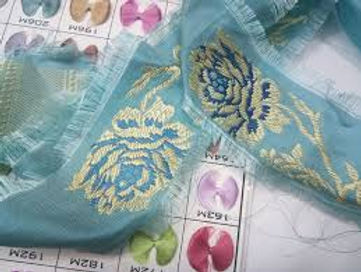
Textile Making Process
The Foundation preserves and celebrates the dying, age-old traditional craft of textile weaving
Before Weaving
To join all these hands together requires a decentralized model, reaching out step by step to each specialist to create quality that is unmatched. This is made possible only through building bridges of compassion, empathy and love.
Sourcing of Raw Material
The essence of handcrafting is truly captured when its raw material is also hand-spun. Our fabrics is purchased at a bi-annual auction in maharashtra which later gets segregated by hand.
We also import the best quality silks from New Zealand and from China.


Design Making
The most important and creative process in weaving a saree is its designing.
We frequently find ourselves veering towards motifs and patterns that appear classical, as we attempt to design textiles whose beauty remains unaffected by passing trends. Time-honoured motifs and placements that communicate collective cultural memory, values and provenance.
Once the design to be woven is finalised (hand drawn or digitally produced), it is translated onto a large graph paper, inch-wise. The process is called "Likhai" and done by the grapher, locally known as "Nakshaband". The Naksha, carefully designed and precise, acts as a blueprint to be hand punched on cardboard stencils called "Naksha Pattas". The higher the number of grids which translate to an inch of the fabric, the greater is the resulting intricacy and level of weaving complexity!
Naksha Pattas are linked in a chain-like structure and attached to the jacquard loom. The cards collectively form the mechanism required to lift the necessary yarns during the process to weave a motif and help translate the pattern in the fabric. A couple of hundreds to even a couple of thousands of graphing cards can be required in weaving, depending on the design of the Banarasi saree. A bigger size and large number of Naksha Pattas define a more complex pattern.
Reeling
In the process of reeling (tying the yarn in a bundle), the threads are separately mounted on the reeling machine, for the warp (tana) the yarn is rolled on a shuttle (dharki). The yarn for weft (bana) is firstly mounted on a charka and then rolled on the bobbin.


Dyeing
Dyeing of yarn in a particular color usually involves immersing the reel or cheese of yarn in the dyeing tank.
We contemplate the significant number of hours our dyers spend on their yarn projects. Doesn't it make sense to choose a quality yarn...so that every stitch is a delight?
Weaving
The most complicated part of the whole process is weaving, where the sari is woven on a handloom. Traditionally, Banarasi sarees are woven on jacquard pit looms. The tana (warp), the longitudinal threads, are held in tension on the loom and lifted up. The bana (weft), the latitudinal threads, are placed in a shuttle. As the shuttle moves back and forth, the warp and weft threads are interwoven.


Iterations
Choosing and balancing colours in a pattern, or "Meena-matching" as we like to call it, is an integral part of our design process and perhaps, one of the most significant determinants of the overall aesthetic appeal of a handwoven textile.
Once a pattern has been designed, graphed with a certain number of colours in mind, and set up on the loom, individual colours are carefully chosen for each element. A swatch is then woven to assess the selections. After several iterations and engaging discussions between the design team and the weavers, a beautiful saree emerges. ⠀
Finishing
Depending on the weaving technique employed, Banarasi sarees need to go through the final process of cutting. This involves manually cutting the tiny threads left on the reverse of the fabric. The sarees are then folded and packaged.

